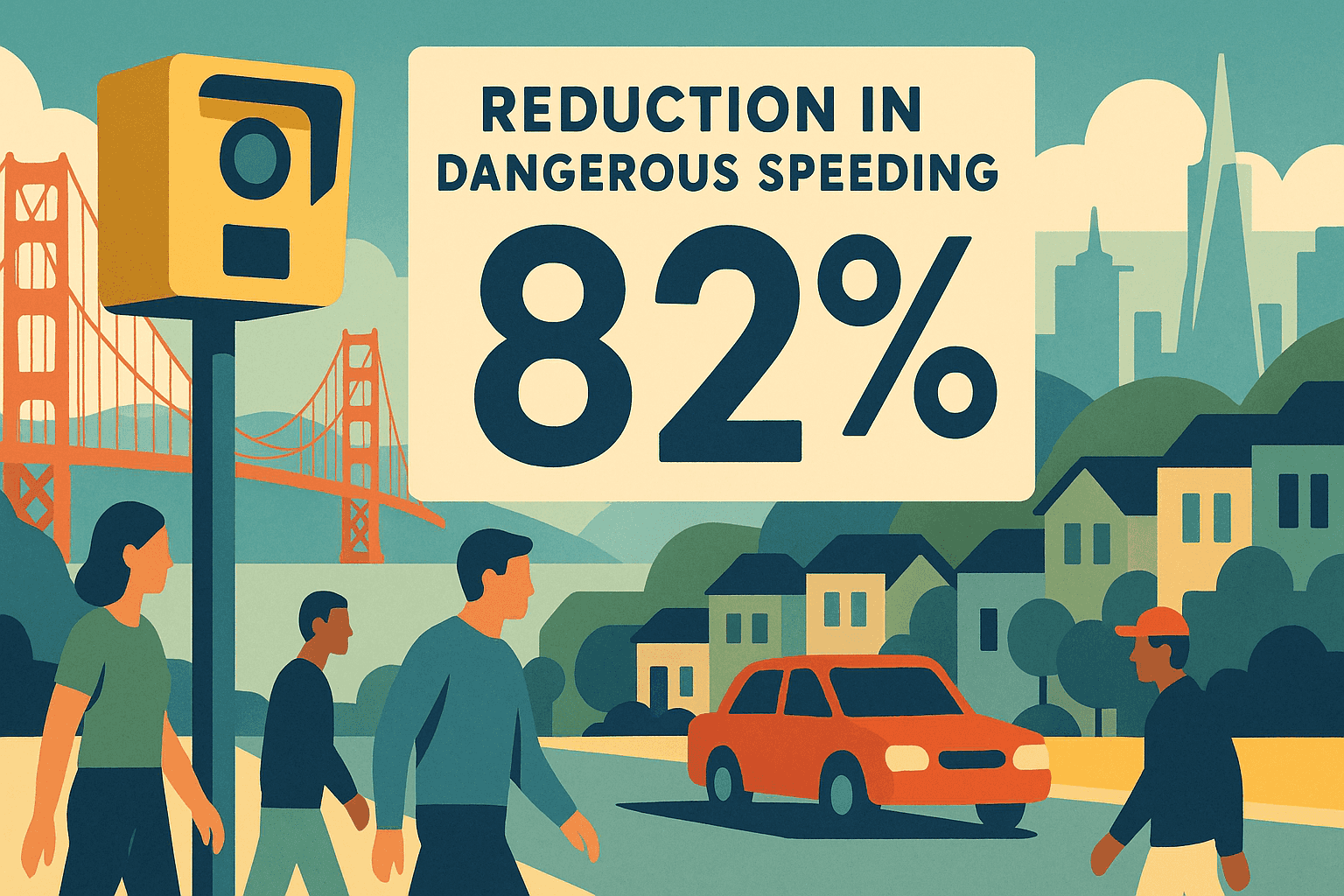Speed cameras reduce speeding by 82%
Published October 02, 2025

The Facts
San Francisco's new speed cameras are proving highly effective, cutting the number of vehicles speeding by more than 10 mph by an average of 82% across monitored intersections. According to reporting from Garrett Leahy at The Standard and Danielle Echeverria at The Chronicle, the 56 cameras began issuing citations on August 5 and generated over 16,500 tickets in their first month. The impact is stark: at Geneva Avenue, speeding dropped from 31% of drivers to just 3%, while at Alemany Boulevard, violations fell from 26% to 5%, per SFMTA data. The data also shows the deterrent is working, with two-thirds of drivers not repeating the offense.
The Context
The cameras represent San Francisco's first major automated traffic enforcement expansion since Vision Zero's launch in 2014. The city's safety record has been dismal—2024 was the deadliest year for dangerous driving since 2007 with 42 deaths, while SFPD traffic enforcement collapsed by 95% between 2014 and 2022. The program was enabled by state law AB 645, which allows six California cities to pilot automated speed enforcement. San Francisco was the first to implement the technology, while Oakland, San Jose, and Los Angeles lag behind with deployments not expected until late 2025 or 2026.
The GrowSF Take
The stunning success of the speed camera program proves that technology and data-driven enforcement are the keys to making our streets safer. While SFPD abandoned traffic enforcement, these cameras are delivering the accountability and deterrence that years of manual policing failed to provide.
The 82% reduction in dangerous speeding shows that modern tools can solve longstanding problems when they are implemented systematically. Rather than accepting dangerous driving as inevitable, San Francisco used technology to create immediate, measurable safety improvements. This data-driven approach—not endless committees or process reforms—is how the city should tackle every public safety challenge.